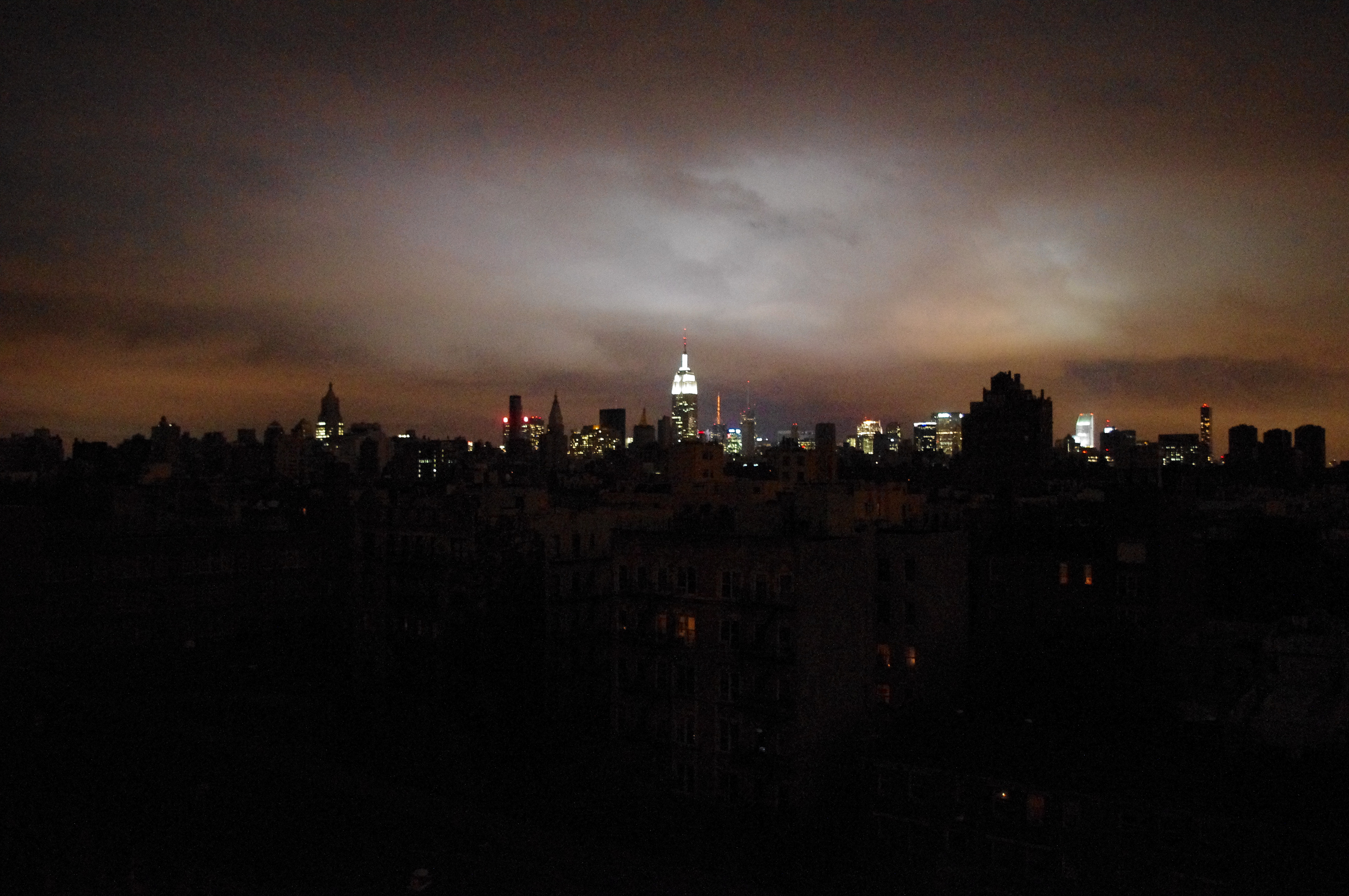Originally published: May 22, 2024
4 reasons EPA’s power plant rule will destroy our grid:
1) Our grid is in crisis
2) EV + AI demand will make things far worse
3) EPA’s rule will shut down almost all our coal plants and prevent new natural gas replacement plants
4) Unreliable solar and wind can't make up the difference
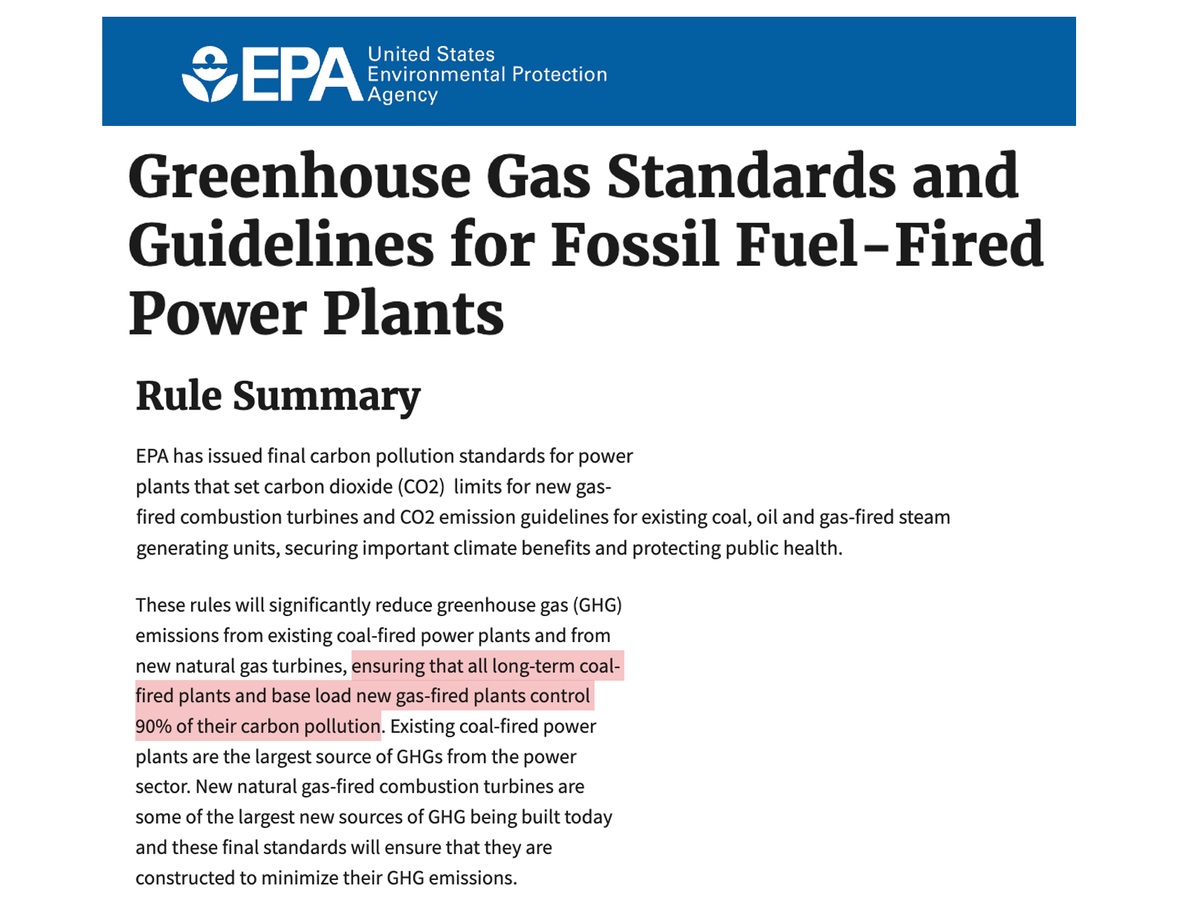
1. Our grid is in crisis
-
Premature shutdowns of reliable fossil fuel plants without sufficient reliable replacements have plunged our grid into crisis nationwide.
Most of North America is at elevated/high risk of electricity shortfalls between 2024-2028.1

2. EV and AI demand will make the electricity crisis far worse
-
At the same time that demand from data centers is projected to skyrocket in order to power energy-hungry AI, the Administration has pledged to add massive artificial demand through EV mandates.
Biden's EV mandate - a dictatorial attack
-
Due in large part to EVs and AI, official 10-year projections for the US have summer and winter peak demand rising by over 79 gigawatts and over 90 gigawatts. 90 gigawatts is equivalent to adding the entire power generating capacity of California (!)2
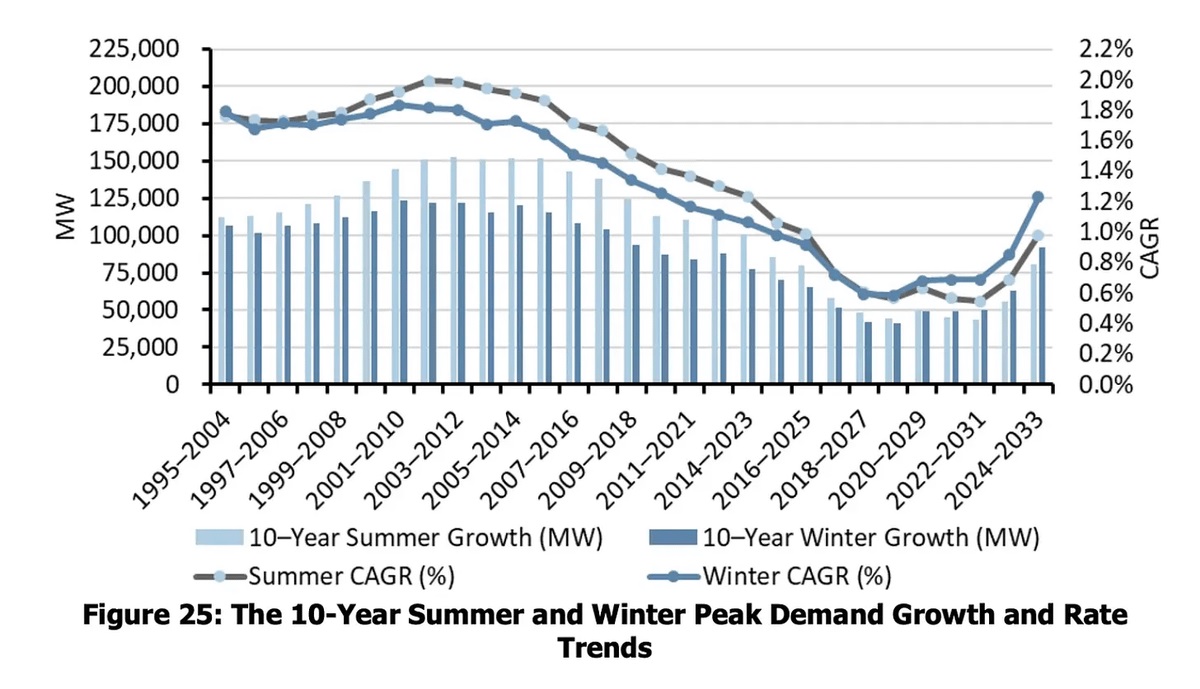
-
With EVs and AI set to catapult demand, doing nothing risks making our grid a Third-World one.
But EPA is not simply doing nothing; it is passing a rule that will, if not stopped, shut down virtually all remaining coal and jeopardize the most cost-effective replacement: natural gas.
3. EPA's rule will shut down almost all our coal plants and prevent new natural gas replacement plants
-
By mandating that existing coal plants and new natural gas plants meet impossible standards, the EPA is destroying 1/6 of our reliable power and preventing it from being replaced.
-
The EPA couldn’t get away with saying: “Our response to today’s growing electricity crisis is to order all coal plants to shut down and prohibit new natural gas plants from replacing them.”
But EPA is doing exactly this by mandating that these plants do the impossible.
-
EPA’s new rule says that by 2032, existing coal power plants plus new natural gas power plants used >40% of the time must commit to retiring pre-2039 or capture 90% of their CO2 emissions—something that exactly zero power plants do today.3

-
EPA claims that fossil fueled power plants will be able to capture 90% of their CO2 emissions by 2032 via carbon capture and sequestration/storage (CCS).
But even with massive government support, no CCS facility is cost-effectively capturing anywhere close to 90% CO2 emissions.
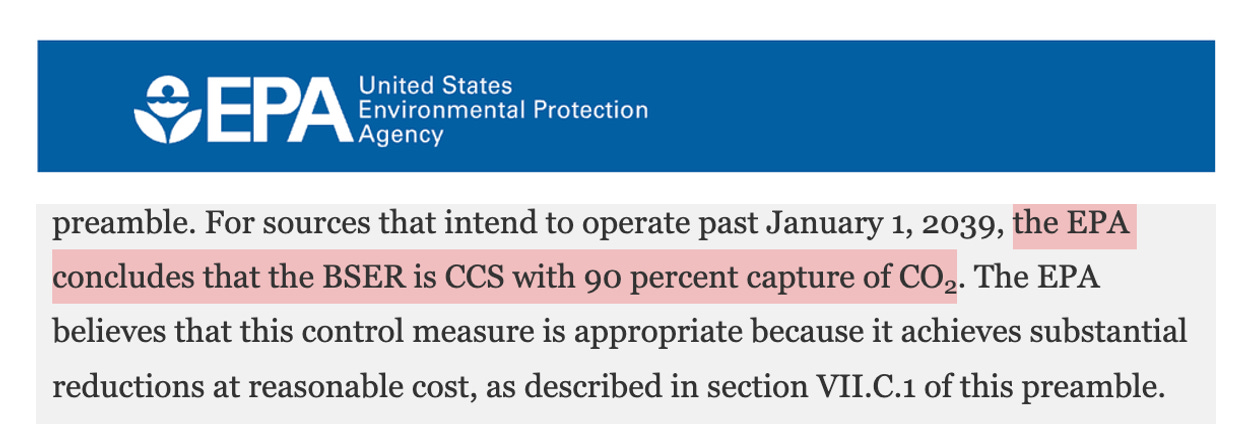
-
Per the Clean Air Act, EPA must pass rules based on “adequately demonstrated and available” tech. If this means anything, it’s that there are commercial plants that meet the rules’ standards (“demonstrated”) and do so cost-effectively (“available”). Neither is remotely the case.
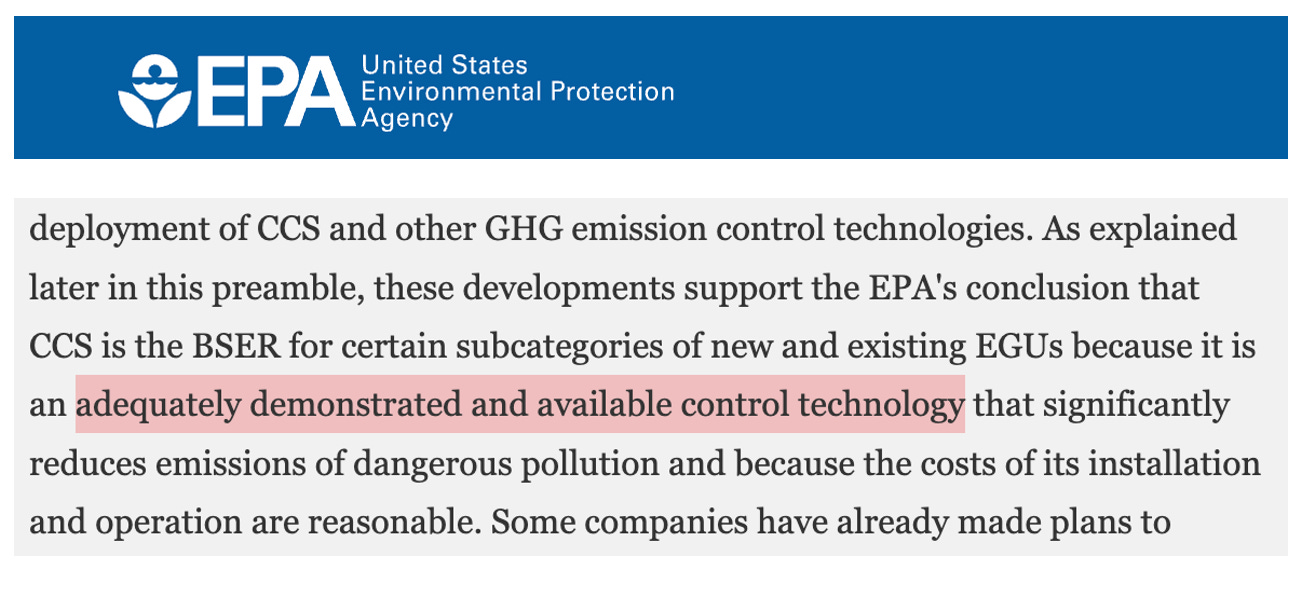
-
Of the >3000 fossil fuel power plants in North America, exactly two of them— one in Saskatchewan and another in Texas—have generating units that currently use CCS on a commercial scale. Both units capture far less than 90% of their emissions, and do so at enormous cost.
-
Over its 9 years of operation, the coal-fired Boundary Dam Unit 3 in Saskatchewan was able to use CCS to capture 57% of its total CO2 (and 0% of the CO2 from the other two units in the plant), never once reaching its goal of 90%.4

-
From 2017-2019, the “Petra Nova” project in Texas captured 26% of the CO2 from Unit 8 of the W.A. Parish plant (by capturing 70% of its own technical capacity)—excluding emissions from gas-powered Petra Nova itself.5
The project failed in 2020 and was recently revived by subsidies.

-
Not only have neither of the 2 existing plants using CCS been able to capture close to 90% CO2 emissions, but neither has been cost-effective even at far lower levels.
E.g., the Boundary Dam project in Canada has an estimated cost of about $100/ton and required heavy subsidies.6
-
A ton of coal for electricity might cost $40. It will produce about 1.76 metric tons of CO2 and at the subsidy price of $85/ton as per the “Inflation Reduction Act,” carbon capture would cost 3-4X the price of the fuel, which would make coal use prohibitively expensive at scale.7
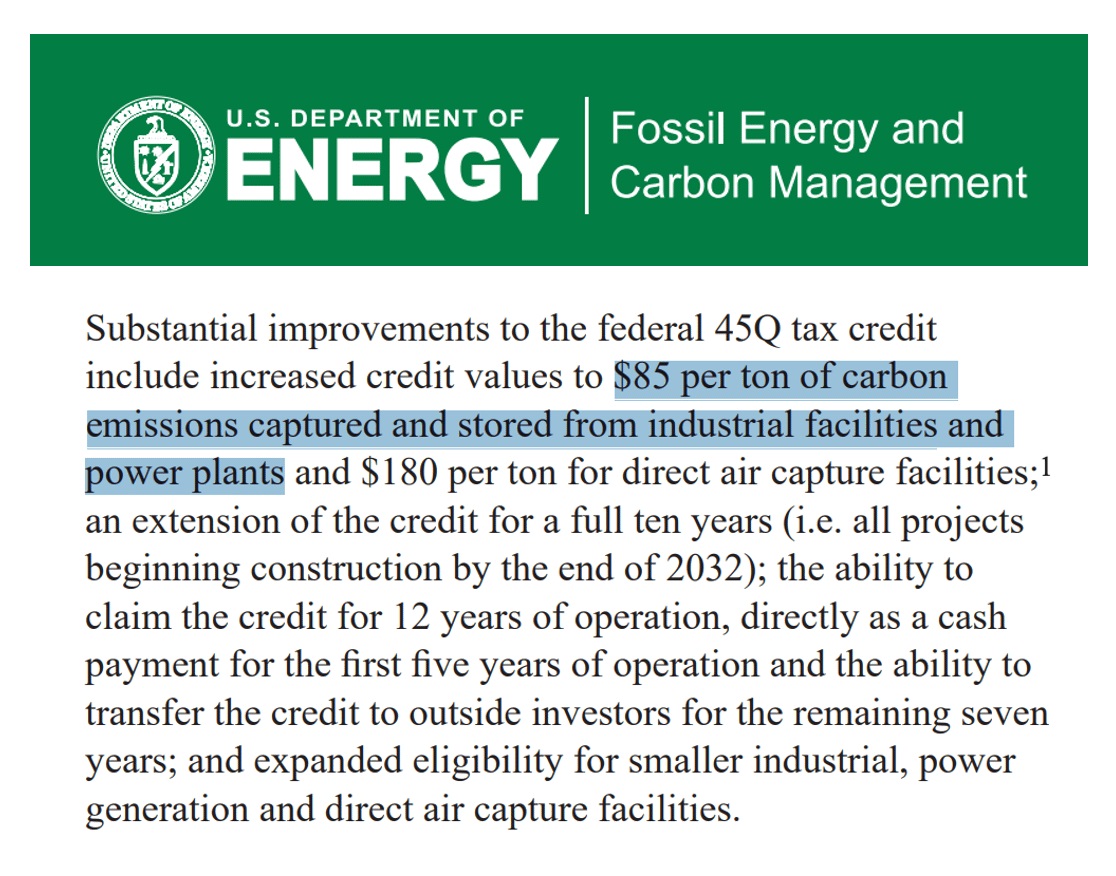
-
Reducing CO2 by 90%—a standard that has never been met and is too cost-prohibitive to scale even at lower levels of CO2 emissions reduction—is not “adequately demonstrated.”
And CCS tends to be more and more costly the closer CO2 reductions get to 100%.
-
What EPA is demanding of power plants would require a revolutionary scientific/economic breakthrough in <10 years that makes CCS far better on a far larger scale at a far cheaper rate, and that can be applied to hundreds of plants.
EPA may as well mandate that unicorns exist.
-
The EPA rule, if not stopped, will have disastrous consequences.
The rule's impossible standards will force nearly all of America’s coal fleet (which is 1/6 of our electricity) to retire. The only reliable replacement would be new natural gas, which the rule's standards also prevent.
-
Of America’s ~184 GW coal fleet, which provides ~16% or 1/6 of our electricity, ~68 GW were already set to close by 2030—in no small part due to past EPA rules. Now EPA’s power plant rule means death for most or all of the remaining ~116 GW.8
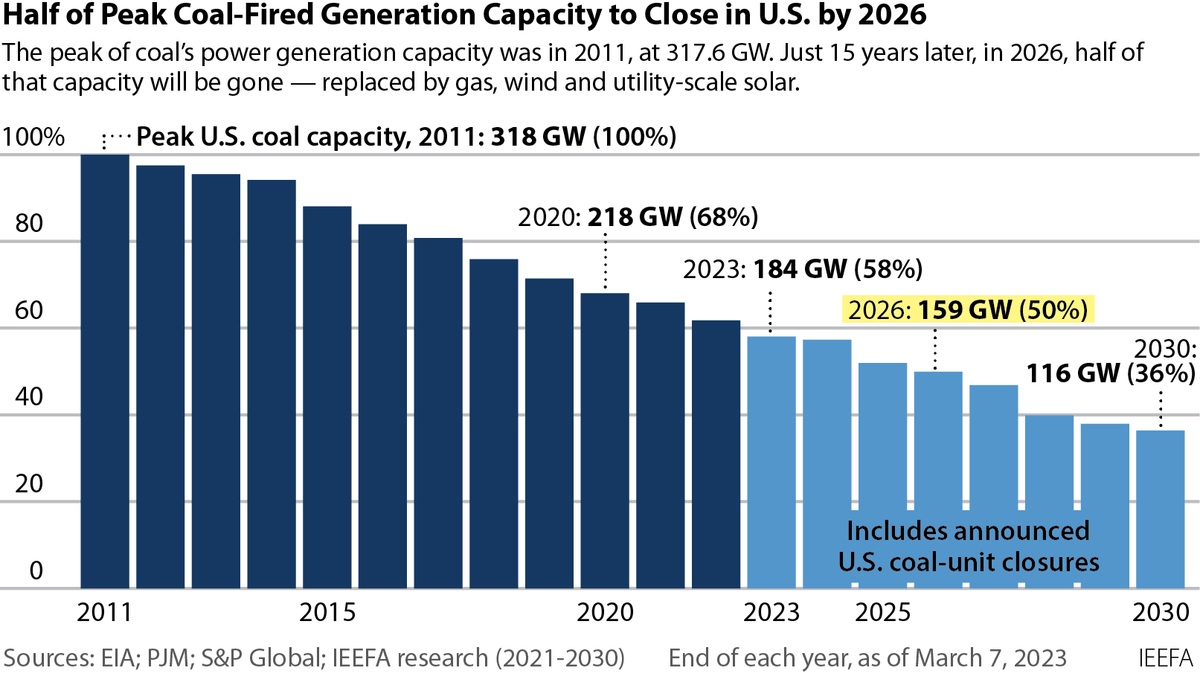
-
Despite premature coal plant shutdowns, prior to EPA’s power plant rule it might have been possible to save the grid by cheaply replacing the retiring coal plants with reliable natural gas plants. But no longer—because EPA’s rule essentially disallows new natural gas plants.
-
Modern natural gas turbines have an average utilization rate of 57%. Since EPA's rule subjects new natural gas plants operating >40% of the time to the same impossible 90% GHG emissions reduction standard as coal, new natural gas plants will be immensely costly or never built at all.9
-
Can natural gas plants stay open by switching to lower-emissions “green” hydrogen? No—this is far too expensive.
Compared on the basis of energy content, “green” hydrogen at its subsidy price of $3/kg costs $26/MMBtu, making it >13X more expensive than natural gas (priced at <$2/MMBtu).10
4. With coal gone and new natural gas out of the question, unreliable solar and wind can't make up the difference
-
Replacing reliable power with solar and wind at a small scale is what caused our current electricity crisis—and doing this at the scale EPA’s rule requires would crater our grid.
-
Since at any given time solar and wind can go near zero, using them as replacements for reliable power plants doesn’t work. For example, Texas’s February 2021 disaster was caused by solar and wind disappearing and inadequate investment in reliable power plants and their weatherization.11
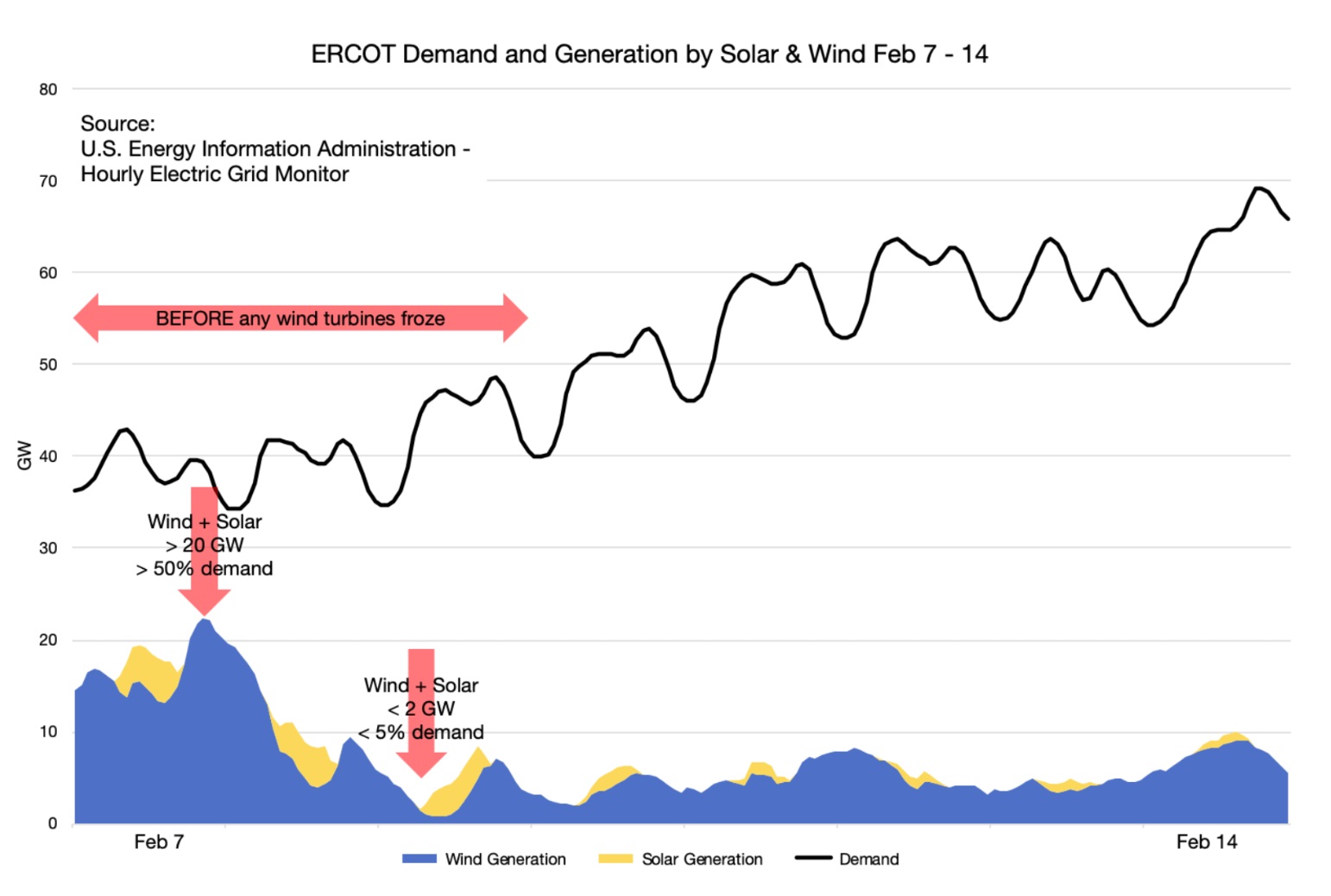
-
The overwhelming majority of new capacity planned in the US comes from solar and wind, not nuclear or hydro, which the US has no near-term ability to scale.
Thus replacing fossil fuel power means replacing it with a huge amount of solar and wind.12
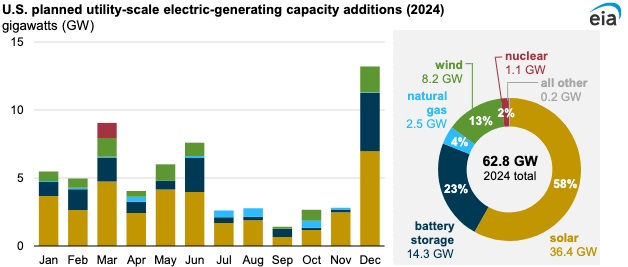
-
Will batteries make unreliable solar and wind reliable? No. Battery storage is expensive and can only provide a given “capacity” (e.g., 1 GW) for a few hours, and only then if fully charged. Planned batteries are nowhere near enough to compensate for solar and wind's unreliability.13
-
Given nuclear, hydro, and battery realities in the US, shutting down reliable fossil fuel power plants means destroying the grid.
This would be devastating in normal circumstances, but in the face of skyrocketing electricity demand from AI and EVs, it's straight up suicidal.14
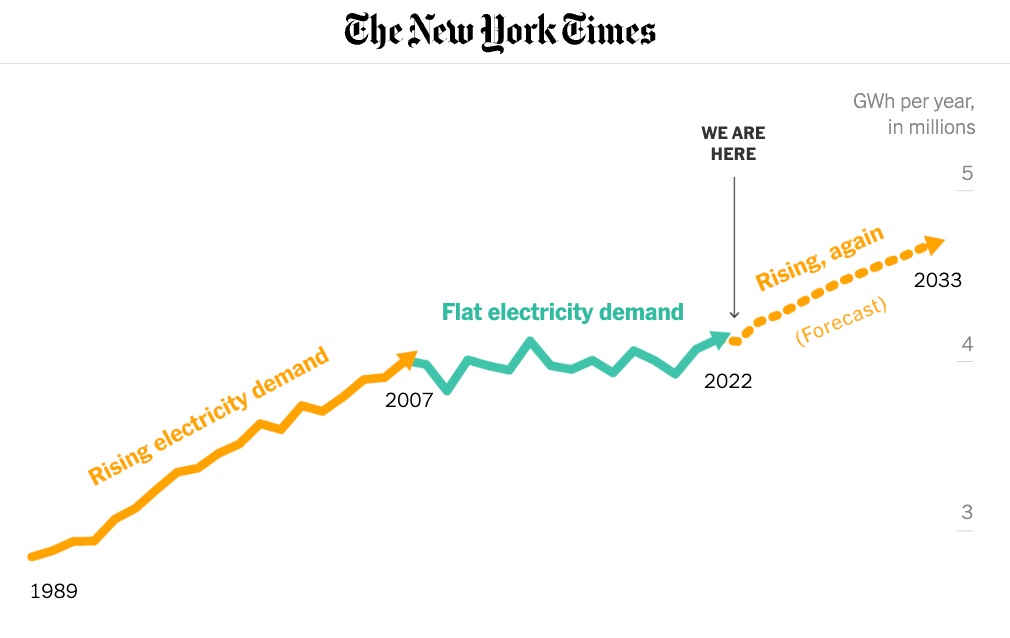
-
Though it might seem unbelievable, the facts are clear: EPA’s power plant rule is literally the single greatest threat to our grid in the history of electricity, given that it would ban up to 1/6 of our reliable power and prevent replacements in an escalating electricity crisis.
-
The root cause of EPA’s nihilistic policy is the Administration’s fixation with reducing GHG emissions at all costs vs. considering GHGs’ full context—that they are a necessary byproduct of reliable fossil fuel energy, which is fundamental to modern life including climate safety.
-
Displaying our Administration’s GHG reductions obsession, EPA’s head Michael Regan said: “If some of these facilities decide that it’s not worth investing in [control technologies] and you get an expedited retirement, that’s the best tool for reducing greenhouse gas emissions.”15

-
Contradicting EPA’s catastrophism, climate disaster deaths have plummeted over the last century while fossil fuel use and GHG emissions have risen.
Why? Because the enormous ability fossil fuels give us to master climate danger far outweighs any new climate challenges from GHGs.16
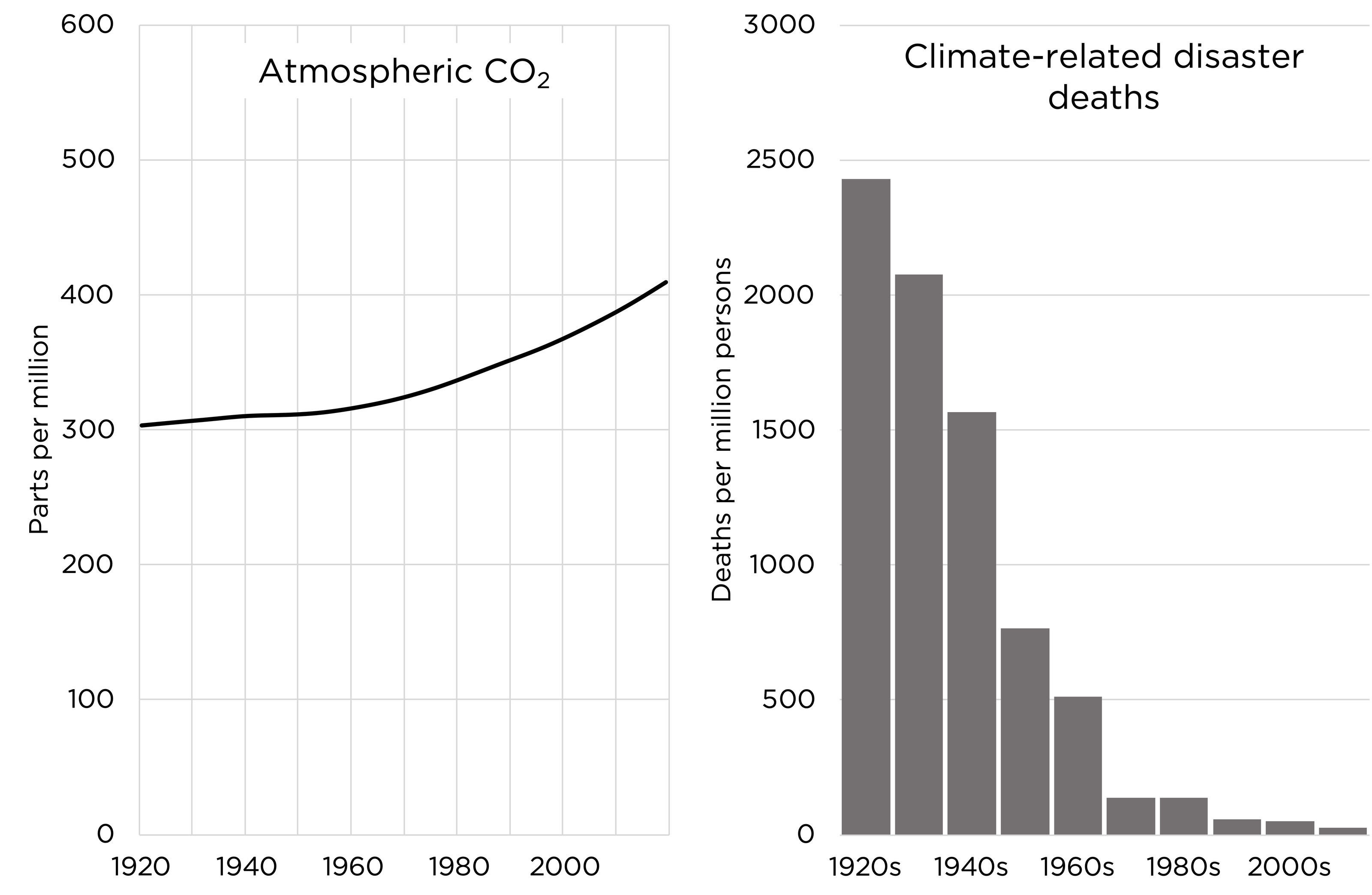
-
The truth is nothing could be worse for climate safety than a dysfunctional grid where we can’t run A/C in the summer and heating in the winter, where irrigation and storm warning systems fail, and where we can’t evacuate because we’re dependent on EVs.
-
Not only do rising global CO2 levels not meaningfully threaten our climate safety thanks to the climate mastery benefits of reliable fossil fuel energy, but global CO2 isn’t even something we can meaningfully impact.
The US causes <1/7 of global CO2 emissions—and falling.17
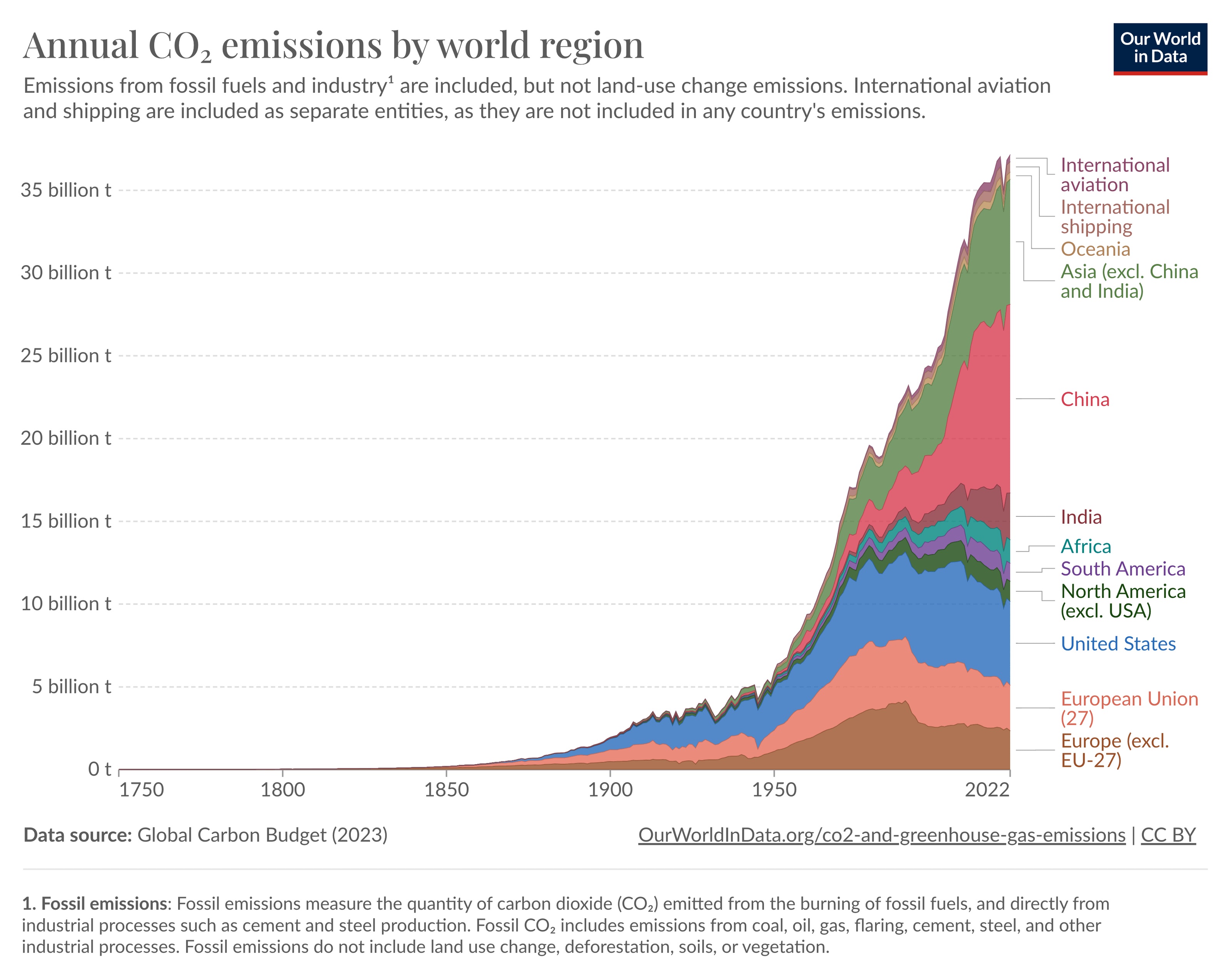
-
In the long term, developing truly cost-effective alternatives is the only moral and practical way to reduce GHG emissions. Energy-valuing nations like China and India will continue to use fossil fuels until there is a cost-effective alternative.
-
By fixating on reducing GHG emissions at all costs and destroying our grid, the Biden Administration is endangering us mortally, including from climate, and making us poorer—which impedes the innovation that long-term global GHG reductions would require.
-
As EPA’s suicidal power plant rule literally affects all of us, every American should stand up and fight against it.
Call the White House at (202) 456-1111 and tell them to repeal this rule, because we will not stand for the destruction of our grid and of our economy.
Michelle Hung and Steffen Henne contributed to this piece.
References
-
U.S. EPA - Greenhouse Gas Standards and Guidelines for Fossil Fuel-Fired Power Plants↩
-
Institute for Energy Economics and Financial Analysis - Carbon Capture at Boundary Dam 3 still an underperforming failure↩
-
U.S. DOE - W.A. Parish Post-Combustion CO2 Capture and Sequestration Demonstration Project (Final Technical Report, page 47)↩
-
International Institute for Sustainable Development - Why the Cost of Carbon Capture and Storage Remains Persistently High↩
-
U.S. DOE - IRA and carbon management opportunities in tribal nations↩
-
U.S. EIA - Electric Power Monthly
U.S. EIA - What is U.S. electricity generation by energy source?↩
-
U.S. EIA - Capacity Factors for Utility Scale Generators Primarily Using Fossil Fuels↩
-
U.S. EIA - Henry Hub Natural Gas Spot Price
U.S. Office of Energy Efficiency & Renewable Energy - Hydrogen Storage↩
-
U.S. EIA - Solar and battery storage to make up 81% of new U.S. electric-generating capacity in 2024↩
-
NYT - A New Surge in Power Use Is Threatening U.S. Climate Goals↩
-
NYT - E.P.A. Describes How It Will Regulate Power Plants After Supreme Court Setback↩
-
UC San Diego - The Keeling Curve
For every million people on earth, annual deaths from climate-related causes (extreme temperature, drought, flood, storms, wildfires) declined 98%--from an average of 247 per year during the 1920s to 2.5 per year during the 2010s.
Data on disaster deaths come from EM-DAT, CRED / UCLouvain, Brussels, Belgium – www.emdat.be (D. Guha-Sapir).
Population estimates for the 1920s from the Maddison Database 2010, the Groningen Growth and Development Centre, Faculty of Economics and Business at University of Groningen. For years not shown, population is assumed to have grown at a steady rate.
Population estimates for the 2010s come from World Bank Data.
